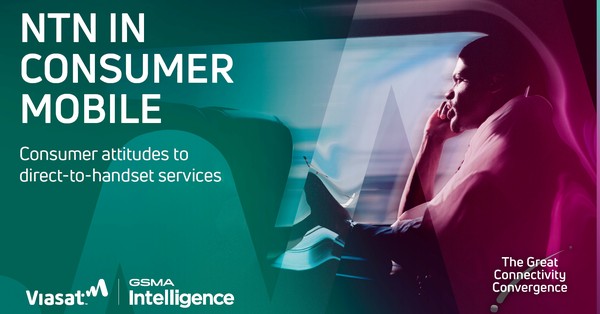Pushing the Boundaries of AI in Wireless Networks
As 5G and future wireless technologies evolve, the role of artificial intelligence (AI) in optimizing network performance is becoming increasingly crucial. At Mobile World Congress (MWC) 2025, Qualcomm and Nokia Bell Labs showcased how multiple vendors can develop interoperable AI models to enhance wireless network efficiency.
This innovation builds on their MWC 2024 proof-of-concept, where they demonstrated AI-enhanced channel state feedback (CSF), an approach that allows networks to dynamically adapt to changing wireless conditions.
By using sequential learning, Qualcomm and Nokia Bell Labs proved that AI models from different vendors can be co-developed without requiring proprietary data sharing. This multi-vendor AI collaboration has major implications for the future of 5G and the transition to 6G.
AI in Wireless Networks: Enhancing 5G & 6G Performance
How AI-Powered CSF Optimizes Wireless Network Performance
Channel state feedback (CSF) is essential for ensuring optimal data transmission between a base station and a mobile device. Wireless conditions—such as interference, device movement, and obstacles—constantly change, requiring networks to adapt in real time.
Traditional feedback mechanisms rely on pre-defined beamforming techniques, which lack flexibility in handling rapid environmental shifts. AI-enhanced CSF, however, learns from real-world data, allowing the network to:
- Generate more precise transmission beams for mobile users.
- Reduce interference by dynamically adjusting signal paths.
- Enhance throughput, delivering faster and more reliable connectivity.
By leveraging AI-driven feedback models, Qualcomm and Nokia demonstrated that wireless networks can become significantly smarter and more efficient.
Multi-Vendor AI Collaboration: Enabling Secure Network Interoperability
One of the biggest challenges in multi-vendor AI integration is ensuring interoperability without exposing sensitive intellectual property. Qualcomm and Nokia addressed this issue by implementing sequential learning, an AI training approach that enables collaboration while maintaining proprietary independence.
AI Sequential Learning: A Secure Approach to Wireless AI Integration
Instead of sharing their internal AI models, companies exchange training datasets containing input/output pairs. This allows each vendor to:
- Train AI models using real-world network conditions.
- Develop interoperable AI components that can seamlessly work together.
- Maintain control over proprietary technology.
This approach was tested in two ways:
-
Device Encoder-First Approach (MWC 2024)
- Qualcomm developed an encoder model and provided a dataset to Nokia.
- Nokia then built an interoperable decoder using this dataset.
-
Network Decoder-First Approach (MWC 2025)
- Nokia designed a decoder model and shared a dataset with Qualcomm.
- Qualcomm then created an interoperable encoder.
Both methods achieved similar performance, proving that AI interoperability is scalable and can be adapted to different deployment needs.
AI Performance in Wireless Networks: Real-World Testing Results
Diverse Deployment Scenarios
For AI-driven wireless networks to be effective, models must function reliably across different physical environments. Qualcomm and Nokia tested their AI-enhanced CSF across three distinct cell sites:
- An outdoor suburban location
- An industrial warehouse environment
- A high-density office setting
These tests helped evaluate how well general AI models compare to hyper-localized models trained for specific environments.
General vs. Hyper-Local AI Models
The findings showed that a single AI model trained on diverse datasets could perform on par with hyper-local models customized for individual locations.
- When the common AI model was introduced to Indoor Site 2, it adapted with minimal retraining.
- The model’s performance remained within 1% of the locally trained models.
This result highlights the robustness of general AI models, proving they can adapt to new environments with minimal adjustments.
AI vs. Traditional CSF: How AI-Enhanced Feedback Boosts 5G & 6G
To quantify the benefits of AI-driven CSF, Qualcomm and Nokia compared AI-based feedback with legacy grid-of-beam-based feedback (3GPP Type I).
The results showed:
- Throughput gains ranging from 15% to 95% depending on user location.
- Higher signal strength and reduced interference across different environments.
- More efficient spectrum utilization, leading to lower network congestion.
This means AI-enhanced CSF could significantly improve network performance in real-world 5G deployments and beyond.
AI’s Role in 5G & 6G: The Future of Wireless Network Automation
The successful demonstration of multi-vendor AI models has significant implications for 5G evolution and the future 6G era.
Key Benefits of AI-Enhanced Wireless Networks
-
Higher Network Capacity
- AI-driven feedback enables better spectrum efficiency, allowing more users to connect with faster speeds.
-
Improved Reliability and Adaptability
- AI models dynamically adjust to changing network conditions, ensuring consistent quality of service (QoS).
-
Energy Efficiency and Sustainability
- Smarter beamforming reduces energy waste, contributing to green networks and sustainability efforts.
-
Standardization and Multi-Vendor Collaboration
- As 3GPP explores AI-based CSF integration, multi-vendor interoperability will be critical for global standardization.
The Future of AI in Wireless: Scaling AI Across 5G & 6G
The Qualcomm-Nokia Bell Labs collaboration represents a major step forward in integrating AI into wireless communications. Their work demonstrates that AI models can:
- Be trained and deployed across different vendors without compromising proprietary technology.
- Improve network intelligence, reliability, and energy efficiency.
- Scale across 5G, 6G, and beyond.
Expanding AI Deployment in Wireless Networks
Moving forward, AI-enhanced CSF could be integrated into:
- Private 5G networks for enterprise applications like smart factories, logistics, and automation.
- Next-generation Open RAN architectures, where AI-driven models can enhance radio access network (RAN) performance.
- 6G research, where AI-native designs will play a key role in enabling self-optimizing networks.
AI-Driven Wireless Networks: The Next Evolution in Connectivity
The results of this multi-vendor AI collaboration prove that AI-driven wireless networks are no longer theoretical—they are becoming reality.
By combining AI, private 5G, and edge computing, Qualcomm and Nokia Bell Labs are leading the way in intelligent network automation.
This breakthrough sets the stage for a more efficient, adaptive, and scalable wireless ecosystem, bringing us one step closer to AI-powered connectivity for the future.








































